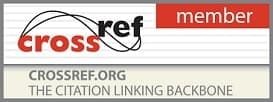- Printed Journal
- Indexed Journal
- Refereed Journal
- Peer Reviewed Journal
P-ISSN: 2394-1685 | E-ISSN: 2394-1693 | CODEN: IJPEJB
Impact Factor (RJIF): 5.38
2021, Vol. 8, Issue 3, Part F
Effect of mirror therapy on upper extremity function in chronic stroke patients: An experimental study
Author(s): Dr. Pooja Vyas and Dr. Shraddha Diwan
Abstract:
Stroke is defined by the World Health Organization as a condition characterized by rapidly developing symptoms and signs of a focal brain lesion, with symptoms lasting for more than 24 hours or leading to death, with no apparent cause other than that of vascular origin. Several treatment approaches in stroke rehabilitation are delivered in the form of – Bobath approach, Brunstorm approach, Motor Relearning Program, Task Oriented Approach, Functional Electrical Stimulation, EMG biofeedback etc. It is a Neuro-rehabilitation technique designed to remodulate cortical mechanisms of pain and has proved successful in phantom pain, stroke, and CRPS. In Mirror therapy, patients perform movements of the unaffected limb while watching its mirror reflection superimposed over the (unseen) affected limb, thus creating a visual illusion (and therefore positive feedback for the motor cortex) of the affected limb movement. Thus, the aim of the study was to find out the effect of mirror therapy on paretic upper limb in chronic stroke patients.
Pages: 380-383 | 663 Views 223 Downloads
Download Full Article: Click Here
How to cite this article:
Dr. Pooja Vyas, Dr. Shraddha Diwan. Effect of mirror therapy on upper extremity function in chronic stroke patients: An experimental study. Int J Phys Educ Sports Health 2021;8(3):380-383.








 Research Journals
Research Journals